This article was medically reviewed by Erik Kramer, DO, MPH. Dr. Erik Kramer is a Board-Certified Primary Care Physician at the University of Colorado. With over 15 years of experience, his clinical interests include obesity and weight management, diabetes care, and preventive care, as well as embracing a holistic approach to primary care. He received his Doctorate in Osteopathic Medicine (D.O.) from the Touro University Nevada College of Osteopathic Medicine and completed his residency at Central Maine Medical Center. Dr. Kramer is a Diplomate of the American Board of Obesity Medicine.
There are 19 references cited in this article, which can be found at the bottom of the page.
wikiHow marks an article as reader-approved once it receives enough positive feedback. This article received 37 testimonials and 94% of readers who voted found it helpful, earning it our reader-approved status.
This article has been viewed 738,391 times.
A lack of iron in the diet and, perhaps, other minerals and nutrients is the most common cause of a low red blood cell count. Eating foods rich in 5 ingredients may help to increase your red blood cell count, including iron, folic acid, vitamin B12, copper, and Vitamin A. You will also want to include copper, vitamins B12, B6, B9, C, and E. Lifestyle changes may also help to increase your red blood cell count, such as getting regular exercise. If these interventions fail, then your doctor may prescribe medication and blood transfusions to increase your red blood cell count.
Steps
Making Diet Modifications
-
1Incorporate iron-rich food in your diet for nutritional improvement. This will help the body rebuild and replace what is lacking. Daily intake of iron-rich food will help increase RBCs in the body. This is because it is an essential part of a red blood cell and hemoglobin as it helps deliver oxygen to different body parts. It also helps in excretion of carbon monoxide upon exhalation. Food rich in iron includes:[1]
- Beans/Legumes
- Lentils
- Green leafy vegetables like kale and spinach
- Dried fruits including prunes
- Organs meats such as liver
- Egg yolks
- Red meat
- Dried raisins
- If daily consumption of iron-rich food daily is not enough, you can turn for supplements and minerals that may increase red blood production. Iron is available in 50-100mg and can be taken 2-3 times daily.
-
2Get more copper. Copper is another essential mineral that helps the cells access the chemical form of iron necessary for red blood cells during the process of iron metabolism. Copper can be found in poultry meats, shellfish, liver, whole grains, chocolate, beans, cherries, and nuts.[2] Copper supplements are also available in 900mcg tablet form and can be taken once daily.
- Accordingly, adults require 900 micrograms of copper per day. During the reproductive years, women menstruate thus require more copper than men.[3]
Advertisement -
3Make sure you get enough folic acid. Otherwise known as vitamin B9, folic acid helps in the production of normal RBCs. A significant decrease folic acid may predispose anemia.[4]
- Cereals, bread, dark green leafy vegetables, peas, lentils, beans, and nuts contain high amounts of folic acid.[5] It is also available in supplement form – 100 to 250mcg can be taken once daily.
- The American College of Obstetricians and Gynecologists or ACOG recommends a daily intake of 400 mcg every day for adult women who regularly menstruate. Likewise, the National Institute of Health recommends 600 mcg of folic acid for pregnant women, which you can get in a prenatal vitamin.[6]
- Besides aiding in production of healthy blood cells, folic acid plays an essential role in the production and repair of the basic building block of cells in normal functioning DNA.[7]
-
4Take vitamin A (Retinol). Vitamin A, supports stem cell development of RBCs in the bone marrow by ensuring that developing red blood cells access enough iron required to process hemoglobin.
- Sweet potatoes, carrots, squash, dark green leafy vegetables, sweet red peppers, and fruits like apricots, grapefruit, watermelon, plums/prunes, and cantaloupe melons are rich in Vitamin A.[8]
- The daily dietary requirement of vitamin A for women is 700 mcg and 900 mcg for men.
-
5Get your vitamin C, too.[9] Take vitamin C when you take your iron supplement to bring about a synergistic effect. This is because vitamin C boosts the ability of the body to absorb more iron, increasing red blood cell production.
- Taking 500mg of vitamin C once daily together with iron will increase its absorption rate in the body making it more effective. However, take precautions while taking iron as high levels of the supplement can be harmful to the body.
- Be cautious taking high doses of vitamin C since it can increase your risk of kidney stones.
Making Lifestyle Modifications
-
1Get your daily exercise. Exercise is good for everyone – including those with low RBC levels – and it can benefit you both physically and mentally. It keeps you healthy and is recommended to avoid acquiring certain diseases and illnesses.[10]
- Cardiovascular exercises such as jogging, running, and swimming are best, though all exercise is good.[11]
- Exercise has an important role in red blood cell production. When you do vigorous exercises, you get tired and sweat a lot. Vigorous exercise requires the body to get a greater amount of oxygen. If that happens it will signal the brain that the body lacks oxygen, therefore, stimulating the production of red blood cells and hemoglobin. This carries and supplies the oxygen needed.
-
2Kick the bad habits. If you're concerned about your RBC count, it's best to avoid smoking and drinking alcohol. It's best to kick these habits for your overall health, too.
- Cigarette smoking can interrupt blood flow as it constricts the blood vessels and makes blood viscous in consistency. It will make the blood unable to circulate properly and deliver oxygen to other body parts and. Also, it can make the bone marrow deprived of oxygen.[12]
- On the other hand, excessive alcohol consumption can also make the blood thicken and slow, deprive it of oxygen, reduce RBC production, and will produce immature red blood cells.
-
3Get a blood transfusion if necessary. If your RBC count is so low that food and supplements can no longer provide large amounts of RBCs, a blood transfusion may be an option. You can talk to your primary doctor and have a diagnostic test given. This is a complete blood count (CBC) that will measure the number of RBCs you have in your body. If your hemoglobin level is below 7, then they may recommend a transfusion.
-
4Get a routine physical assessment. Visiting your doctor regularly is the best way to know how your RBCs are doing. What's more, additional tests may be required to rule out any underlying condition which causes low RBC count. It’s best to see your physician regularly. An annual physical check-up is a healthy habit.
- If you have been told you have a low RBC count, take the above tips to heart. Dedicate your lifestyle and diet to upping your count and revisit your doctor. Your levels, ideally, will normalize.
Understanding Red Blood Cell Counts
-
1Know the basics of red blood cells. Around a quarter of the human body cells are red blood cells, or erythrocytes. These RBCs are developed in the bone marrow produced at approximately 2.4 million red blood cells per second.[15]
- Erythrocytes circulate in the body for 100 to 120 days. It is the same reason why we can only donate blood once every 3 to 4 months.
- Men have an average of 5.2 million RBCs per cubic millimeter meanwhile 4.6 million in women. If you are a regular blood donor, you’ll notice that there are more men who passed the blood donation screening than women.
-
2Know how hemoglobin works in the blood. The iron-rich protein known as hemoglobin is the main component of red blood cells.[16] It is responsible for the red color as iron binds with oxygen.
- Each hemoglobin molecule has four iron atoms and each of which binds to 1 oxygen molecule with 2 oxygen atoms. Around 33% of an erythrocyte is hemoglobin normally 15.5 g/dL in men and 14 g/dL in women.
-
3Understand the role of red blood cells. Red blood cells play an important role in transporting oxygen-rich blood from the lungs to the tissues and cells. RBCs have cell membranes composed of lipids and proteins essential for physiological function while working within the capillary network through the circulatory system.[17]
- In addition, red blood cells aid in the removal of carbon dioxide. They contain the carbonic anhydrase enzyme which allows for a reaction of water and carbon dioxide to form carbonic acid and separate hydrogen and bicarbonate ions.
- Hydrogen ions bind with hemoglobin while bicarbonate ions go to the plasma removing approximately 70% of carbon dioxide. Twenty percent of carbon dioxide binds with hemoglobin which is then released into the lungs. Meanwhile, the remaining 7% gets dissolved in the plasma.
Expert Q&A
Did you know you can get expert answers for this article?
Unlock expert answers by supporting wikiHow
-
QuestionHow does Beta thalassemia minor affect red blood cell count?
 Mandolin S. Ziadie, MDDr. Ziadie is a board certified Pathologist in South Florida. She specializes in renal, transplant, and pediatric Pathology and has over 12 years of experience. She earned her medical degree from the University of Miami School of Medicine in 2004 and completed her fellowship in Pediatric Pathology at Children’s Medical Center in 2010.
Mandolin S. Ziadie, MDDr. Ziadie is a board certified Pathologist in South Florida. She specializes in renal, transplant, and pediatric Pathology and has over 12 years of experience. She earned her medical degree from the University of Miami School of Medicine in 2004 and completed her fellowship in Pediatric Pathology at Children’s Medical Center in 2010.
Board Certified Pathologist
-
QuestionCan drinking water increase red blood cell count?
 Mandolin S. Ziadie, MDDr. Ziadie is a board certified Pathologist in South Florida. She specializes in renal, transplant, and pediatric Pathology and has over 12 years of experience. She earned her medical degree from the University of Miami School of Medicine in 2004 and completed her fellowship in Pediatric Pathology at Children’s Medical Center in 2010.
Mandolin S. Ziadie, MDDr. Ziadie is a board certified Pathologist in South Florida. She specializes in renal, transplant, and pediatric Pathology and has over 12 years of experience. She earned her medical degree from the University of Miami School of Medicine in 2004 and completed her fellowship in Pediatric Pathology at Children’s Medical Center in 2010.
Board Certified Pathologist
-
QuestionAre there any fruits I can eat to increase my red blood cell count?
 Mandolin S. Ziadie, MDDr. Ziadie is a board certified Pathologist in South Florida. She specializes in renal, transplant, and pediatric Pathology and has over 12 years of experience. She earned her medical degree from the University of Miami School of Medicine in 2004 and completed her fellowship in Pediatric Pathology at Children’s Medical Center in 2010.
Mandolin S. Ziadie, MDDr. Ziadie is a board certified Pathologist in South Florida. She specializes in renal, transplant, and pediatric Pathology and has over 12 years of experience. She earned her medical degree from the University of Miami School of Medicine in 2004 and completed her fellowship in Pediatric Pathology at Children’s Medical Center in 2010.
Board Certified Pathologist There are some fruits you can eat that will help, but a balance of nutrients is what is most important. The best foods to eat to improve your red blood cell count are those high in iron, such as beef, poultry, fish, dark leafy greens, beans and tofu. However, you should also eat foods that are high in vitamin C, which helps your body absorb iron. Many fruits are rich in vitamin C, such as oranges, grapefruits, melon, and strawberries. It is also important to get plenty of folic acid from dark leafy vegetables, liver, oranges, papayas, bananas. Vitamin B12 is also useful for red blood cell counts and you can get it from animal products including fish, meat, poultry, eggs and milk.
There are some fruits you can eat that will help, but a balance of nutrients is what is most important. The best foods to eat to improve your red blood cell count are those high in iron, such as beef, poultry, fish, dark leafy greens, beans and tofu. However, you should also eat foods that are high in vitamin C, which helps your body absorb iron. Many fruits are rich in vitamin C, such as oranges, grapefruits, melon, and strawberries. It is also important to get plenty of folic acid from dark leafy vegetables, liver, oranges, papayas, bananas. Vitamin B12 is also useful for red blood cell counts and you can get it from animal products including fish, meat, poultry, eggs and milk.
References
- ↑ https://www.webmd.com/diet/iron-rich-foods
- ↑ https://medlineplus.gov/ency/article/002419.htm
- ↑ https://lpi.oregonstate.edu/mic/minerals/copper
- ↑ https://www.webmd.com/a-to-z-guides/folic-acid-deficiency-anemia#1
- ↑ https://www.webmd.com/baby/qa/what-foods-contain-folic-acid
- ↑ https://ods.od.nih.gov/factsheets/Folate-HealthProfessional/
- ↑ https://www.berkeley.edu/news/media/releases/97legacy/dna.html
- ↑ https://ods.od.nih.gov/factsheets/VitaminA-HealthProfessional/
- ↑ https://www.webmd.com/cold-and-flu/qa/what-foods-are-rich-in-vitamin-c
- ↑ https://medlineplus.gov/benefitsofexercise.html
- ↑ https://www.webmd.com/fitness-exercise/guide/exercise-healthy-heart#1
- ↑ https://www.nhlbi.nih.gov/health-topics/smoking-and-your-heart
- ↑ https://www.urmc.rochester.edu/encyclopedia/content.aspx?contenttypeid=167&contentid=red_blood_cell_Count
- ↑ https://medlineplus.gov/ency/article/003644.htm
- ↑ https://medlineplus.gov/ency/anatomyvideos/000104.htm
- ↑ https://www.ucsfhealth.org/education/hemoglobin_and_functions_of_iron/
- ↑ https://www.urmc.rochester.edu/encyclopedia/content.aspx?ContentID=34&ContentTypeID=160
- Harold S. Ballard, MD, “The Hematological Complications of Alcoholism."
- Marie Dunford, J. Doyle, “Nutrition for Sport and Exercise," Chapter 8, page 302.
About This Article
To increase your red blood cell count, incorporate iron-rich foods into your diet, like beans or leafy green vegetables. Also, include foods like nuts and bread to make sure you’re getting enough folic acid. For a healthy red blood cell count in your bone marrow, add fruits like apricots or watermelon, or take a vitamin A supplement to ensure you’re getting between 700 to 900 micrograms per day. Additionally, adults should take 900 micrograms of copper, and 500 micrograms of vitamin C to keep red blood cell counts healthy. To learn how to better understand red blood cell counts from our Nursing reviewer, keep reading!


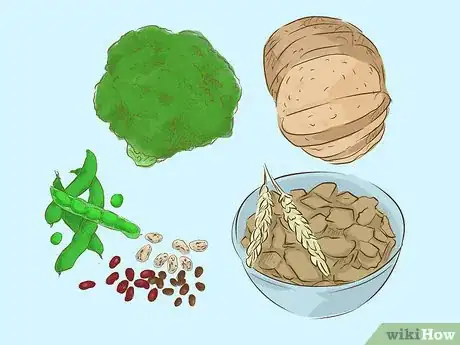
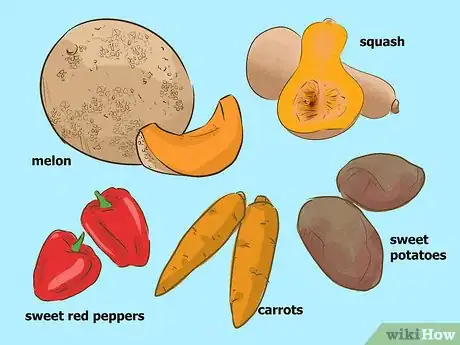
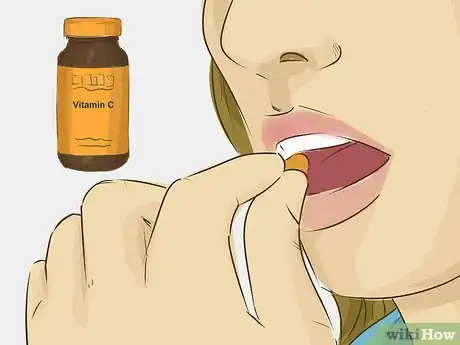


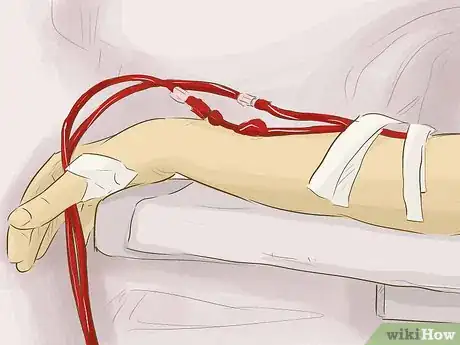



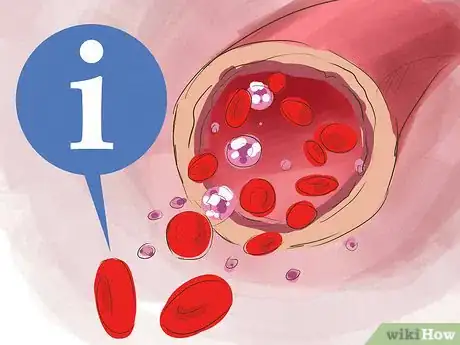





-Step-22.webp)












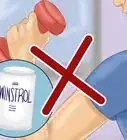






































Medical Disclaimer
The content of this article is not intended to be a substitute for professional medical advice, examination, diagnosis, or treatment. You should always contact your doctor or other qualified healthcare professional before starting, changing, or stopping any kind of health treatment.
Read More...